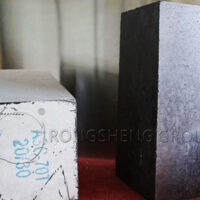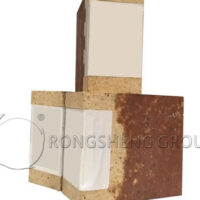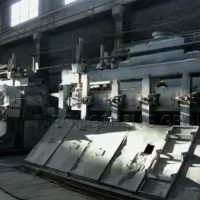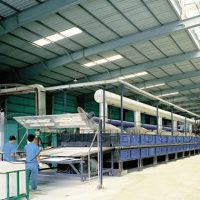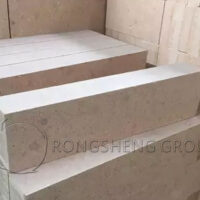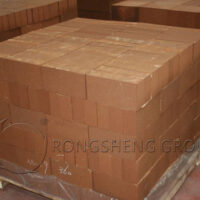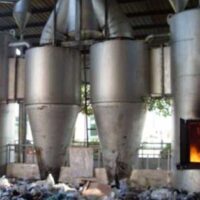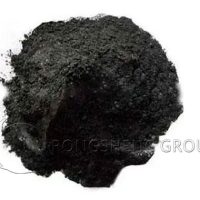We, the experimental technical team of Rongsheng refractory manufacturer, just did a set of experiments today. Our 75 silicon carbide material has a bending resistance of 35MPa. In terms of compressive strength, the machines in our laboratory are constantly under pressure. It also has the characteristics of anti-erosion and anti-wear. Similarly, the application of SiC to silicon carbide bricks and silicon carbide shelving boards also has some outstanding excellent properties.
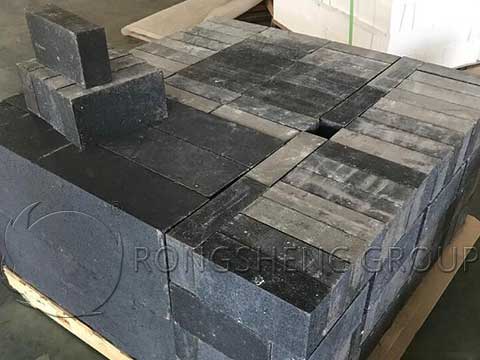
What are the excellent properties of silicon carbide bricks and silicon carbide shed panels?
- High temperature compressive and flexural strength. Silicon carbide bricks and silicon carbide sheds can withstand pressure and bending at high temperatures without deformation or cracking. In addition, silicon carbide material also has high hardness and wear resistance, which can effectively resist mechanical wear in the furnace.
- The firing temperature range is wide. Silicon carbide materials can be used at high temperatures of 800°C-1400°C, are suitable for drying, sintering, and other processes in ceramics and other high-temperature processes, and have a wide range of application scenarios.
- Good performance. Silicon carbide brick materials can adapt to different atmospheres, including oxidizing atmosphere and reducing atmosphere, and have good firing stability and service life. Under normal operation and firing conditions, the service life of the shelf board can reach more than 500-1000 times.
- The silicon carbide shed plate has high density, smooth surface, and no slag during use. Silicon carbide material has excellent density and surface smoothness. It can avoid slag lumps in the furnace and keep the production environment clean.
- It is resistant to rapid cooling and rapid heating and is not easy to crack when used. Silicon carbide materials have excellent thermal stability and thermal shock stability and can withstand sudden temperature changes without cracking or deformation, ensuring the stability of the production process.
- High product strength. The thickness of the silicon carbide shed plate is relatively thin, but under the premise of the same specification and long-term use without deformation, it can greatly improve the utilization rate of the kiln and the energy saving rate. It is a high-efficiency and energy-saving product.

[Problem Solving] What is the reason for the small fried patterns on the surface of silicon carbide bricks?
Silicon carbide bricks are high-performance refractory materials, but in the process of production and use, different cracks may occur, affecting their appearance and performance. Rongsheng refractory manufacturers, for this reason, put forward some reasons and treatment methods for fried grains and small cracks on the surface of silicon carbide bricks.
-
Fried grain problem
Fried grain usually refers to the large surface cracks, exceeding 5mm, which have a great impact on the quality and performance of the brick body. The main causes of cracking problems are:
(1) Add too much water. Adding too much water is one of the main causes of fry marks. Too much moisture will generate steam inside the silicon carbide brick, and the steam will expand at high temperatures, causing the surface of the brick to burst.
(2) Insufficient humidity. Before producing silicon carbide bricks, the bricks must be fully dried. If the humidity is insufficient, the moisture inside the adobe cannot be completely discharged, and the water vapor will be discharged too violently during the firing process, which will also lead to the appearance of fried patterns.
(3) The ratio is unreasonable. The ratio of silicon carbide bricks is an important factor affecting its quality and performance. If the ratio of particles to powder is unreasonable, especially if the ratio of powder is too large, it will also lead to the appearance of fried lines.
Treatment method: The method to solve the problem of fried grain is mainly to control factors such as the amount of water added, drying time, and proportion during the production process. Ensure that the moisture inside the adobe is fully volatilized, and the water vapor can be discharged smoothly during the firing process. At the same time, strictly control the inspection to avoid the occurrence of fried grain problems.
-
Small crack problem
Small cracks refer to surface cracks whose length is less than 5mm. Although they will not affect the performance of silicon carbide bricks, they are usually not recognized by customers because they affect the aesthetics. Therefore, precautions are required in the production process. The main cause of the fine crack problem is the following iron.
Binders and powders are not sufficiently dispersed. Adequate dispersion of binder and powder is one of the important factors in ensuring the quality of silicon carbide bricks. If not sufficiently dispersed, it will result in loose bonding and fine cracks.
Treatment method: The method to solve the problem of small cracks is mainly to fully stir the binder and powder evenly during the production process to ensure a tight combination. At the same time, carefully observe the surface of the brick body during the inspection to avoid the occurrence of small cracks.
To sum up, mastering the causes and treatment methods of the cracks on the surface of silicon carbide bricks can ensure the quality and performance of silicon carbide bricks, improve their service life and aesthetics, and provide better protection for applications. Rongsheng Refractory Material Manufacturer is a powerful refractory material production and sales manufacturer. Our refractory products have been sold to more than 100 countries and regions all over the world, and have been recognized by customers. Our technical team is also the guarantee of our refractory materials. Contact us for a free quote.

